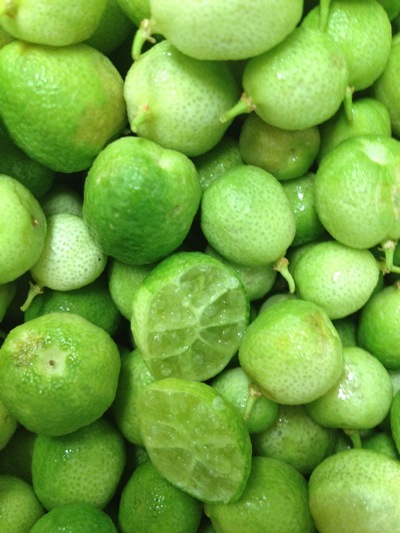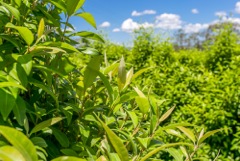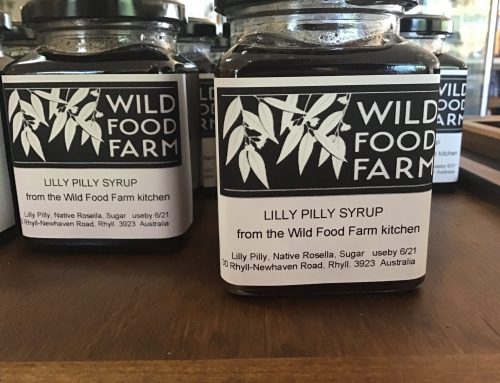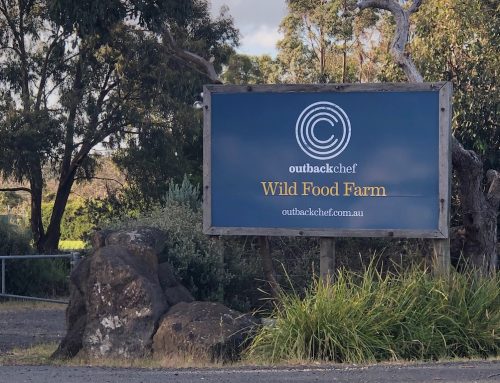The Australian Desert Lime is fast becoming a favourite with many chefs and food manufacturers, you can find it in everything from ice-cream, cheese cakes and biscuits thru to some amazing tasting cocktails. There’s nothing like the taste of these beautiful little fruits, the bright emerald green colour looks fantastic with any dish and it is a true Australian citrus.
The Desert Lime is also known as Wild Lime, Bush Lime and in some cases the Native cumquat, it’s a small berry sized fruit with a refreshingly lime flavour, although not quite as tart as regular limes.
Traditional Uses of Desert Limes
Early pioneering women would cook everything with them that they would have used their much loved European limes, food such as preserves, jams and flavouring for teas refreshing drinks.
The Desert Limes were recognised by Ludwig Leighhardt, the explorer, in 1844 and recipes were published in some of the early colonial cookbooks as early as 1898.
Health Benefits of Desert Limes
Desert lime is a rich source of calcium, significant levels of Vitamin C, antioxidants, folate (Vitamin B9), Vitamin E and lutein.
It also has a high potassium:sodium ratio, which may help to reduce blood pressure.
Nutritional Information of Desert Limes
(per 100g frozen puree) (per 100 grams dry weight)
Energy 198 Kj
Zinc (Zn) 1.060 mg
Magnesium (Mg) 94.5 mg
Protein 0.1 g
Calcium (ca) 384.2 mg
Total fat 2.7g
Iron (Fe) 4.74mg
Total saturated fatty acids 1.0g
Carbohydrates 4.0g
Phosphorus (P) 127.8 mg
Sugar (total) 4.0g
Sodium (Na) 2.24 mg
Potassium (K) 1287.8 mg
Manganese (Mn) 0.8775 mg
Copper (Cu) 0.641 mg
Molybdenum (Mo) 17.7 μg
Where do Desert Limes grow?
The Desert Limes do like semi-arid conditions. They grow naturally in woodlands and brigalow scrubs. But these hardy plants are heat tolerant, frost tolerant, saline soil tolerant as well as drought tolerant making this a wonderful bushfood crop that can be utilised in a number of ways and a truly great Australian fruit.
Whilst a lot of the wild-harvested limes have a really thick skin, which actually works for those wanting to use the skin to advantage, there are now species available with a much thinner skin and more fruit pulp which I’m finding a lot of the chefs prefer.
Desert Limes are now grown commercially due to the popularity of the fruits and it is expected that the demand will increase. Grafting the trees is now done as the trees reach maturity and bear fruit within 3 years as distinct from the wild trees that take around 10 years.
There is a lot of interest for these bushfood fruits from international markets and that is also expected to increase.
Storage of Desert Limes
The commercial fruits are harvested from December thru to March and they will last in the fridge for a week or so, but generally they go straight into the freezer for storage and to ensure a year round supply. They do freeze well and when thawed can be used.
There is a growing market for the Desert Lime powder, although I do find that it can be a bit bitter.
Cooking with Desert or Wild Limes
Because of their lime flavour they go in place of most of the usual traditional limes. Great in cheese cakes, jellies and also salads.
If you’re after a quick and easy recipe then try Avocado Dip with Desert Limes






Leave A Comment
You must be logged in to post a comment.